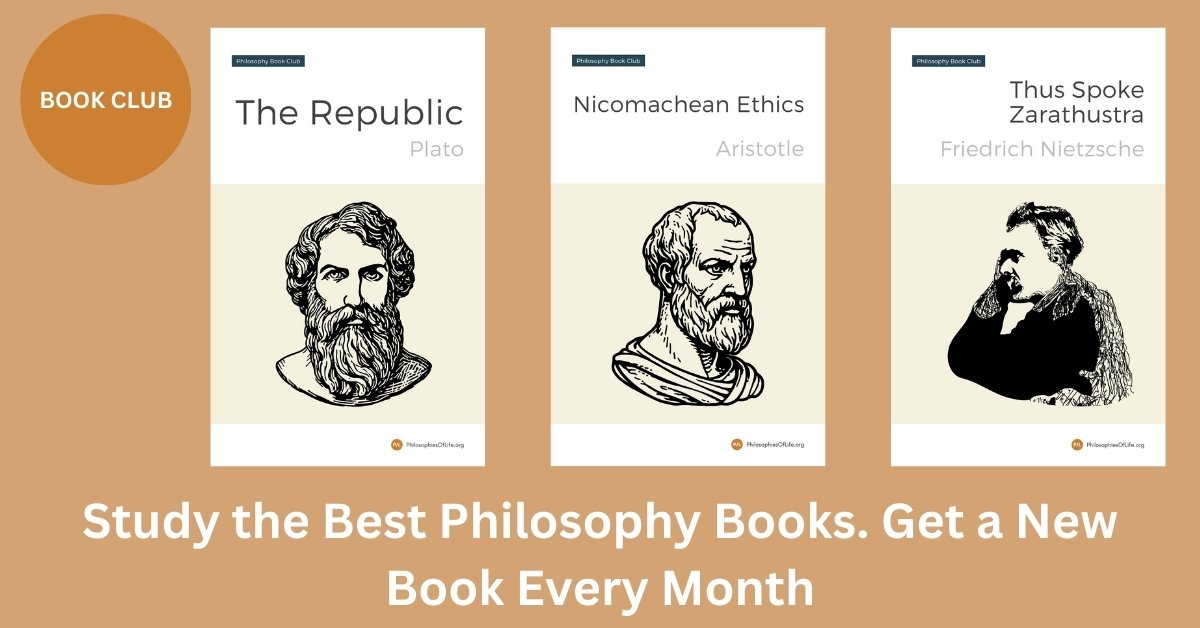Understanding the role of art and aesthetics in Schopenhauer’s philosophy is crucial for those seeking to develop their own philosophy of life. While many are aware of its importance, the deeper reasons behind this connection are often overlooked. A clear grasp of these ideas can profoundly influence how we approach and shape our personal philosophies. This article examines Schopenhauer’s philosophical views, explores his thoughts on art and aesthetics, and highlights their significance in the context of life philosophy.
Key features of Schopenhauer’s philosophy
Arthur Schopenhauer’s philosophy is rooted in the idea that at the core of all existence lies the “will,” a blind and insatiable drive that underpins everything in the world. He argued that this will is what drives humans and animals to act, but it is also the source of endless suffering, as desires are rarely fully satisfied and often lead to more desires. Schopenhauer viewed life as inherently filled with pain, frustration, and fleeting moments of happiness, which he saw as a mere absence of suffering rather than true fulfillment.
One of his key ideas is that aesthetic experiences, such as enjoying art, music, or nature, offer temporary escapes from the will’s demands. During these moments, individuals can detach from their struggles and experience peace. Schopenhauer also believed that compassion is a vital moral principle, as recognizing the shared suffering of all beings can foster empathy and selflessness.
Schopenhauer’s emphasis on the primacy of suffering influenced later schools of thought, especially existentialism and psychoanalysis. His philosophy encourages self-awareness and advocates for reducing desires to minimize suffering. By accepting the harsh realities of life and cultivating compassion and creative expression, Schopenhauer believed individuals could find a degree of solace amidst life’s challenges.
What is Schopenhauer’s view of art and aesthetics?
Arthur Schopenhauer viewed art and aesthetics as a way to transcend the struggles and suffering inherent in life. According to Schopenhauer, human existence is driven by what he called the “will,” a blind, insatiable force that governs our desires and actions. This will often leads to frustration and dissatisfaction, as our desires are never truly fulfilled. However, he believed that art offered an escape from this endless cycle of wanting and striving.
Through engaging with art, Schopenhauer argued, individuals can momentarily detach from the will and enter a state of pure contemplation. During this state, a person experiences the world not as an individual with personal needs and desires, but as an objective observer free from the burdens of will-driven existence. He saw this experience as a rare form of freedom from the chaos of life.
Schopenhauer also held that art reveals universal truths about life and existence. He believed that when individuals connect with these truths through art, they gain a sense of understanding and clarity that is otherwise difficult to achieve in everyday life. Overall, Schopenhauer viewed art and aesthetics as a profound way to access a higher state of awareness, allowing individuals to experience a kind of respite from the relentless demands of their inner will.
This example helps demonstrate this philosophical perspective. A striking instance of Schopenhauer’s view on art and aesthetics can be seen in the experience of listening to a powerful symphony. He believed that music, in particular, has a unique ability to connect us to something beyond the mundane realities of everyday life. Imagine sitting in a grand concert hall, completely engrossed in a performance, where the sweeping melodies and harmonies seem to express emotions and truths that words cannot capture. For Schopenhauer, this type of moment transcends personal desires and concerns, allowing us to momentarily escape the suffering tied to human existence. The experience feels almost timeless, as though the boundaries of the self dissolve, and all that remains is pure immersion in the beauty of the art. This profound connection to music highlights the spiritual and universal qualities he attributed to artistic expression.
Challenges to Schopenhauer’s view about art and aesthetics
Some philosophers object to or reject Schopenhauer’s views about art and aesthetics for a variety of reasons, ranging from their focus on individuality and subjectivity to concerns about the limitations of his framework. One common criticism is that Schopenhauer places too much emphasis on art as a form of escape from the struggles of life. Critics argue this perspective overlooks other functions of art, such as its ability to inspire action, strengthen societal bonds, or provoke critical thought about the human condition. They suggest that art is not solely about transcending suffering but also about engaging more deeply with the world and its complexities.
Another objection is related to Schopenhauer’s reliance on his metaphysical system as the foundation for his aesthetic theory. Philosophers who disagree with his metaphysics find it difficult to accept his conclusions about art, as those conclusions are deeply tied to his broader worldview. For those who reject his metaphysics, Schopenhauer’s aesthetics can seem unsupported or overly speculative. Critics argue that art can be understood and valued without relying on such a metaphysical framework, focusing instead on psychological, cultural, or historical perspectives.
Additionally, some critics argue that Schopenhauer’s views are limited in their appreciation for diverse interpretations of art. His philosophy tends to prioritize specific kinds of art—such as music or particular visual styles—and downplays others that do not fit neatly into his theory. This narrow approach has led to concerns that his framework is rigid or exclusivist, failing to consider the full spectrum of human artistic expression and its many purposes.
Finally, some philosophers challenge Schopenhauer’s insistence on art’s detachment from will and desires. They argue that art often reflects the passions, struggles, and aspirations of humanity, serving as a mirror to human experience rather than a pure escape from it. For these critics, Schopenhauer’s view underestimates the role of emotion, context, and active engagement in the creation and appreciation of art. This leads them to favor more inclusive and dynamic theories that capture the multi-faceted nature of art and aesthetics.
Why art and aesthetics is important to Schopenhauer’s philosophy
These are some of the main reasons why grasping the concept of art and aesthetics is essential to comprehending Schopenhauer’s philosophy.
- Connects Philosophy to Human Experience
Art and aesthetics serve as a bridge between abstract philosophical ideas and tangible human experiences. They provide a way to explore profound questions about emotion, meaning, and perception, which form a significant part of human life. By focusing on art and aesthetics, philosophy becomes more relatable and grounded. It offers insight into how individuals connect emotionally with the world around them through beauty, creativity, and artistic expression. This connection helps philosophy stay relevant and impactful, showing that it is not just about intellectual concepts but also about the lived experiences of people.
- Explores the Nature of Beauty and Creativity
Understanding art and aesthetics opens the door to discussions about the nature of beauty, creativity, and inspiration. These discussions are central to many philosophical conversations about what it means to create and appreciate something beyond its functional value. By examining aesthetics, philosophy can address questions like why beauty moves us or why creativity feels essential to human nature. This exploration deepens the understanding of the subjective and emotional layers of life, emphasizing the non-material aspects of human existence that contrast with purely rational thought.
- Provides Insights into Emotion and Perception
A focus on art and aesthetics highlights the role of emotion and perception in shaping human understanding. Art often speaks to feelings that words cannot fully capture, offering a different lens through which to view reality. Philosophy can use this lens to better grasp how individuals interpret the world, not just through logic and reason but through intuition and sensory experiences. This insight enriches the way philosophy addresses human consciousness and the various ways people engage with their environment.
Contrasting Schopenhauer’s philosophy with Nietzsche’s philosophy
Arthur Schopenhauer and Friedrich Nietzsche both discussed art and aesthetics within their philosophies, but their perspectives diverged significantly. For Schopenhauer, art was a means to transcend the suffering and pain of life. He saw art as a pathway to escape from the relentless desires and struggles that characterize human existence. Beauty and artistic experiences, in his view, could temporarily allow individuals to detach from the will—the driving force of life—and bring a state of contemplation and calm.
Nietzsche, on the other hand, celebrated art as a powerful affirmation of life itself. Instead of viewing art as an escape from the harsh realities of existence, Nietzsche saw it as a creative force that embraced and celebrated life’s struggles and chaos. He argued that through artistic expression, humanity could develop strength and vitality. For Nietzsche, art was deeply tied to the affirmation of existence, even in the face of suffering, which he saw as an inherent part of life.
This divergence highlights the philosophical distance between the two thinkers. Where Schopenhauer sought relief from the burdens of life through art, Nietzsche viewed those very burdens as something to be embraced and transformed through creative expression. Art, for Nietzsche, was not about escaping life but about engaging with it on the deepest level. These contrasting views reflect their broader philosophical differences, with Schopenhauer emphasizing resignation and Nietzsche championing empowerment and affirmation.
Art And Aesthetics, Schopenhauer’s philosophy and the philosophy of life
Reflecting on Schopenhauer’s views about art and aesthetics, regardless of personal agreement or disagreement, can play a crucial role in shaping one’s philosophy of life. Art, in its broadest sense, is a means of expressing the human experience, transcending language and cultural barriers to communicate universal truths. Contemplating Schopenhauer’s perspective encourages deeper thoughts about the value of art and human creativity, fostering an appreciation for how art influences our emotions, perceptions, and approach to life’s challenges. Even if one disagrees with his interpretations, engaging with his ideas prompts meaningful introspection.
When developing a philosophy of life, considering different perspectives allows for a more well-rounded and thoughtful approach. Schopenhauer’s musings about art are closely tied to the human condition, focusing on emotions, suffering, and the ways we seek meaning in our lives. Reflecting on this can help individuals better understand their own sources of inspiration and fulfilment. Art, after all, often mirrors life in ways that help people to see their experiences, struggles, and joys from new angles. Thinking critically about these ideas encourages us to question what truly matters to us and how we wish to live.
Furthermore, considering Schopenhauer’s views can provide insight into the role of beauty and creativity in everyday life. Art is not simply a luxury or passive experience; it has the power to influence how we see ourselves and the world around us. Reflecting on this importance can motivate individuals to seek moments of beauty, creativity, and self-expression, even in the most mundane situations. This awareness can guide decisions and attitudes, helping to create a more meaningful and inspired life.
Ultimately, engaging with Schopenhauer’s philosophy on art and aesthetics offers a lens through which to explore our values, emotional responses, and personal ideals. Whether we agree or not, grappling with these ideas can help ground our own beliefs and deepen our understanding of what it means to live a fulfilling life. By reflecting on such perspectives, we cultivate not only a broader intellectual framework but also a greater sense of connection to ourselves and others through shared expressions of the human experience.


